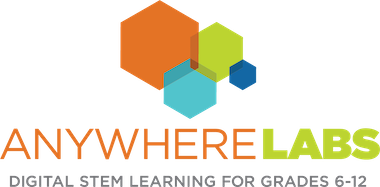Explore the physics of waves and how they travel while building your very own speaker in What’s in a Wave? The sounds we hear are caused by vibrations of a material, like the string of a guitar moving back and forth when plucked. These vibrations cause the air molecules to move, allowing us to hear the sound in our ears. Students will learn how waves move through different materials and how components like wavelength, frequency, and velocity affect its motion.
Looking for the answer keys for this activity bundle? Complete this form to gain the password to our Activity Keys webpage.
Students will know
- Transverse waves
- Longitudinal waves
- Mechanical waves
- Electromagnetic waves
- Characteristics of a wave: velocity, amplitude, frequency, crest, trough, and wavelength
- Parts of a speaker
- How a speaker creates sound
- Sound waves change when passing through a medium, and which medium allows for the fastest or slowest travel.
Students will understand
- Waves are all around us even though they cannot be seen, smelled, or felt.
- Law of Conservation of Energy
Students will be able to
- Build a transverse wave model
- Build a homemade speaker from paper plates and magnets
- Measure the decibels produced from their homemade speaker using their phones
- Solve for velocity, wavelength or frequency given the value of two of the three variables.
- Draw the change in a wave when passing through a medium.
- Identify parts of a wave: amplitude, trough, crest, and wavelength
- Differentiate between high frequency and low frequency waves
- Differentiate between longitudinal and transverse waves
Next Generation Science Standards Connections
MS-PS4-1. Use mathematical representations to describe a simple model for waves that includes how the amplitude of a wave is related to the energy in a wave.
MS-PS4-2. Develop and use a model to describe that waves are reflected, absorbed, or transmitted through various materials.
Texas Essential Knowledge and Skills Connections
PHYSICS.7(B): Investigate and analyze characteristics of waves, including velocity, frequency, amplitude, and wavelength, and calculate the relationship between wave speed, frequency, and wavelength.
PHYSICS.7(C): Compare characteristics and behaviors of transverse waves, including electromagnetic waves and the electromagnetic spectrum, and characteristics and behaviors of longitudinal waves, including sound waves
Louisiana Standards for Science Connections
6-MS-PS2-3. Ask questions about data to determine the factors that affect the strength of electric and magnetic forces.
6-MS-PS4-1. Use mathematical representations to describe a simple model for waves that includes how the amplitude of a wave is related to the energy in a wave and how the frequency and wavelength change the expression of the wave.

